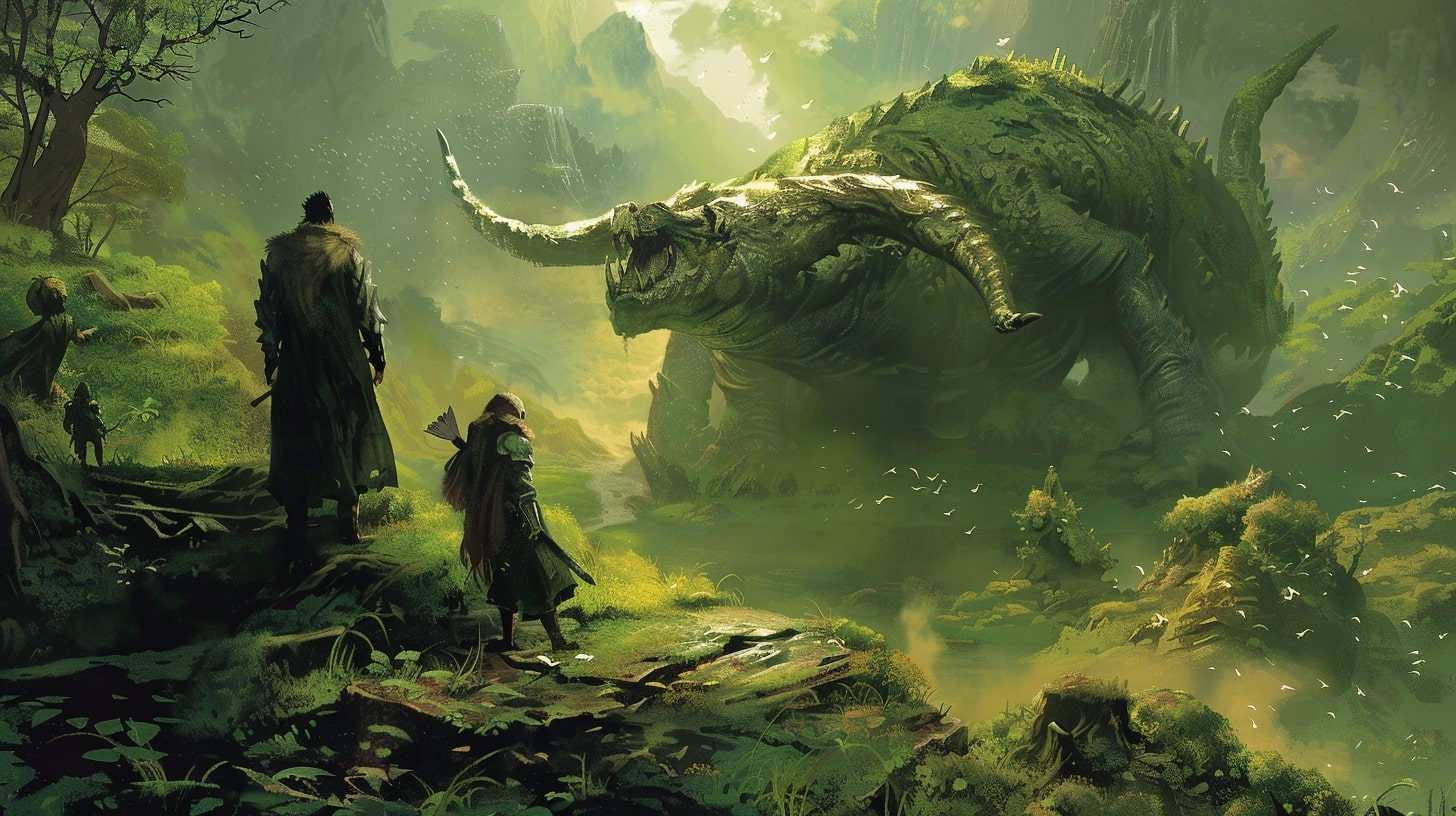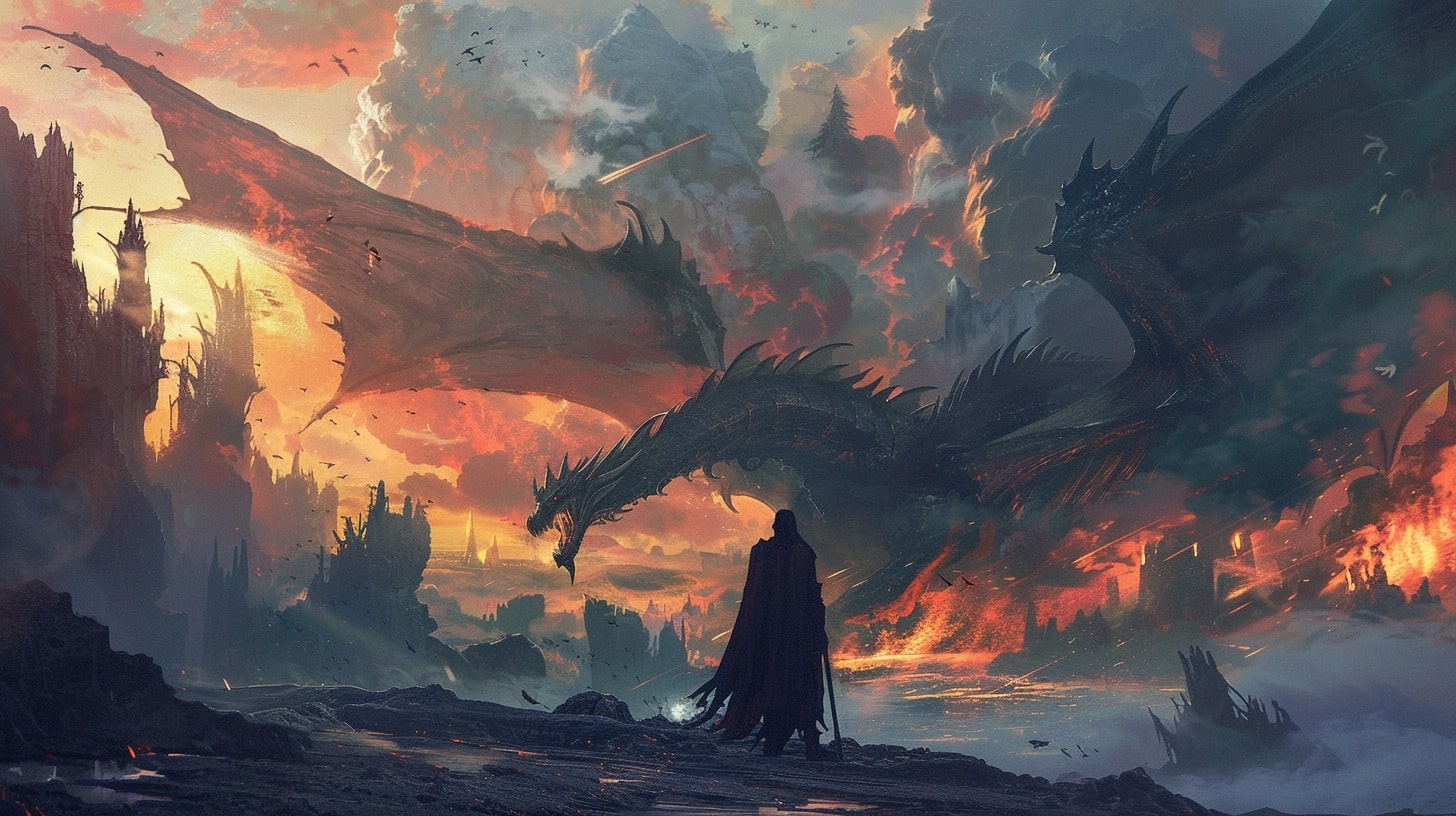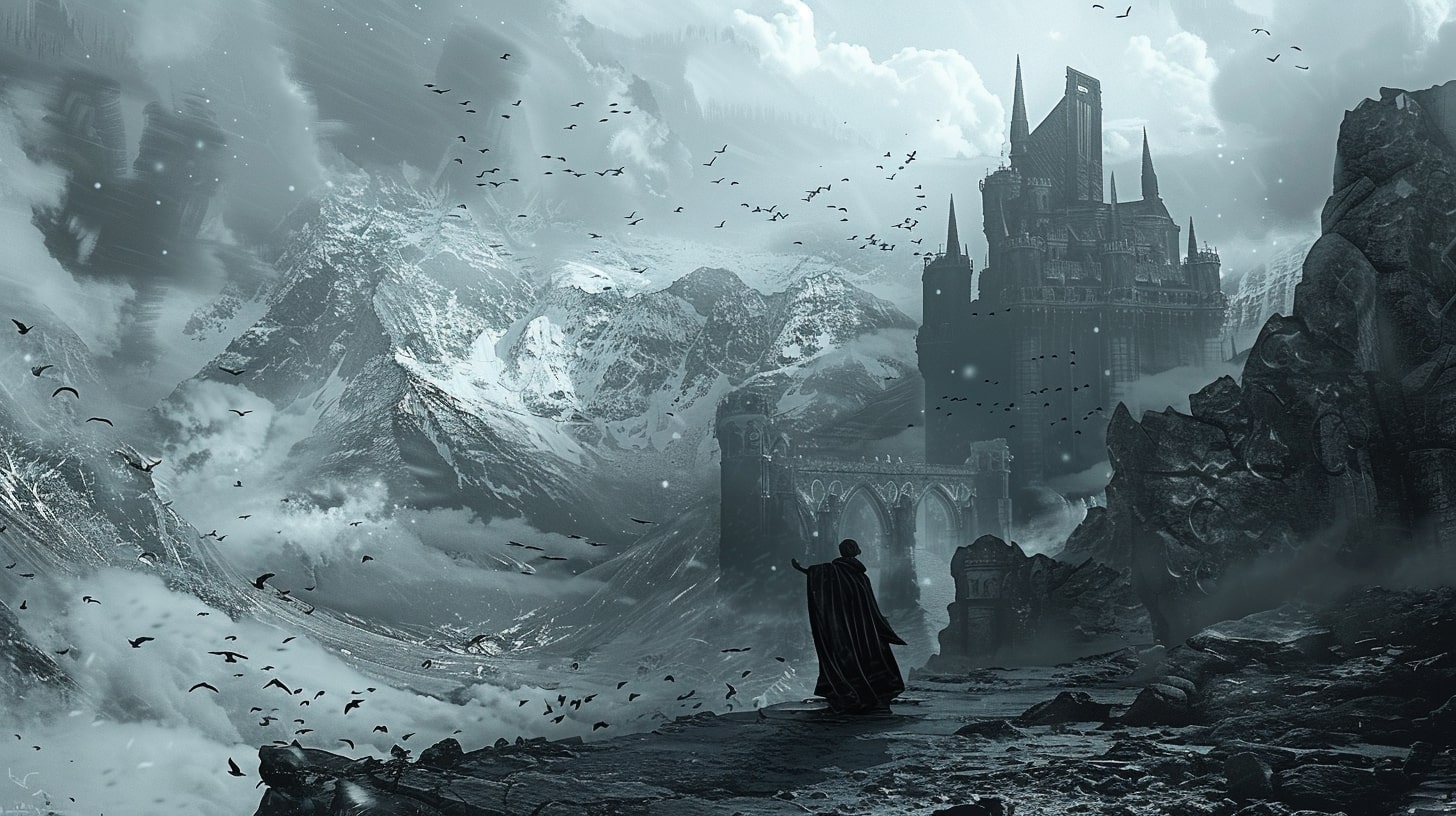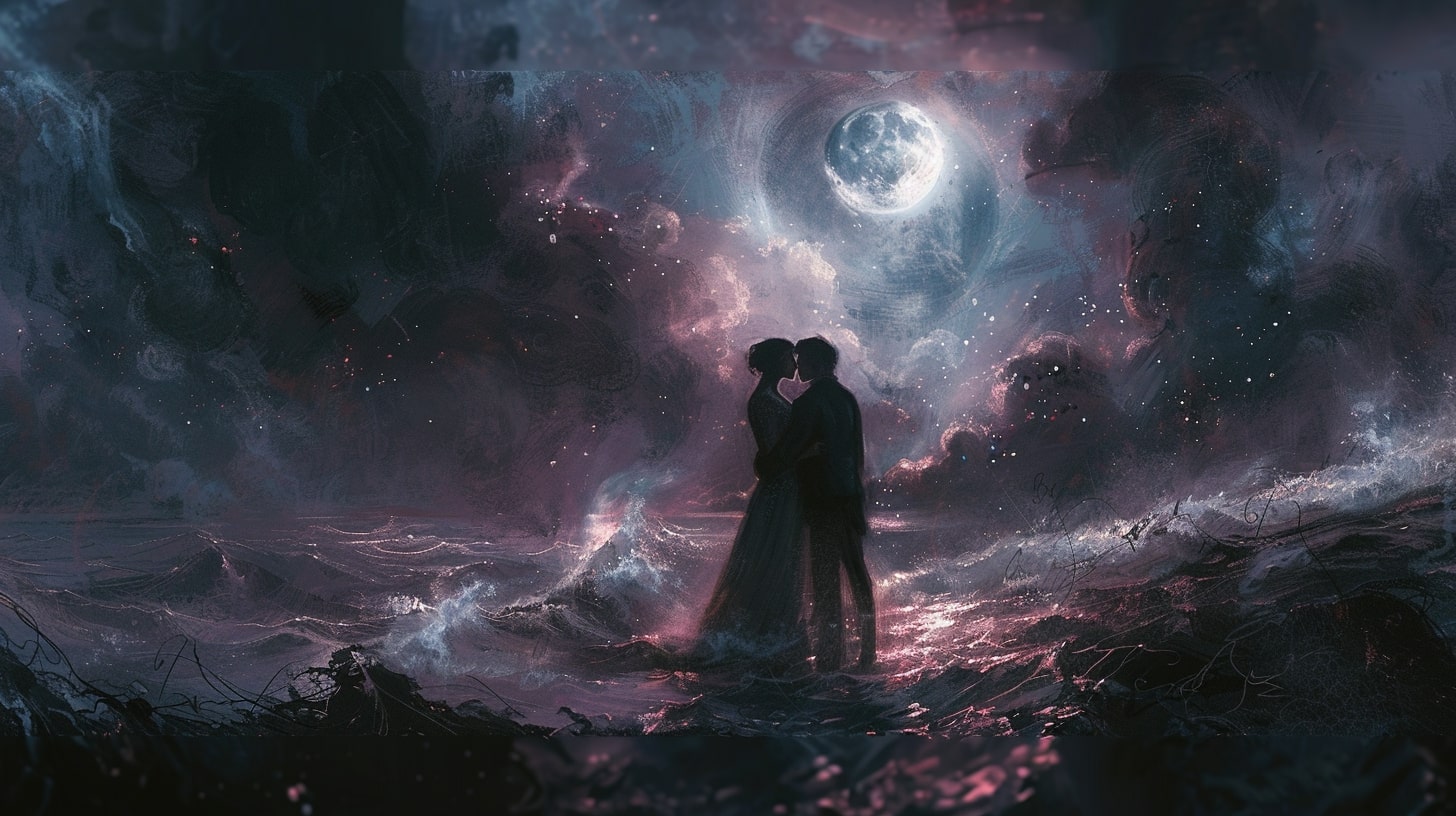Introduction to Historical Fantasy
If you're a writer with a passion for both history and fantasy, writing historical fantasy allows you to blend these two genres and create a unique and captivating story.
By combining elements of history with imaginative elements of fantasy, you can transport readers to intriguing worlds where historical events intertwine with magical elements.
Writing historical fantasy should never feel like a chore. Let me show you how to make it a joyful process.
What is Historical Fantasy?
Historical fantasy is a genre that blends elements of history and fantasy together. In this genre, authors weave fantastical elements into real historical settings, creating a captivating and immersive reading experience.
By adding magical systems, mythical creatures, or supernatural phenomena to a specific time period, writers can explore alternative histories or delve into the unknown aspects of the past.
Historical fantasy often requires extensive research into the chosen historical era to ensure accuracy and authenticity. By grounding the story in a recognizable historical context, the fantastical elements can provide a fresh perspective and add excitement to the narrative. This genre allows writers to craft intriguing tales that transport readers to different times while sparking their imagination.
Why Write Historical Fantasy?
Writing historical fantasy offers a multitude of creative opportunities and benefits. Here are a few reasons why you might consider diving into this genre:
Blend reality with imagination: Historical fantasy allows you to infuse magical or supernatural elements into real historical events, creating a unique and compelling story that captivates readers.
Explore untold stories: By incorporating fantasy elements into historical settings, you can shed light on lesser-known events or characters from the past and breathe new life into them.
Engage readers in an immersive experience: Historical fantasy offers readers a chance to experience history in a new and exciting way. It allows them to witness familiar events from a fresh perspective and immerse themselves in a world where anything is possible.
Ignite the imagination: Historical fantasy sparks the imagination by combining the allure of history with the limitless possibilities of fantasy. It allows writers to create their own rules and explore new and fantastical ideas within a well-researched historical backdrop.
Appeal to a wide audience: Historical fantasy attracts readers who enjoy both historical narratives and fantastical adventures. By blending these genres, you can appeal to a diverse range of readers who appreciate the combination of history and imagination.
Whether you want to transport readers to ancient civilizations, explore medieval Europe with a magical twist, or reimagine historical figures with supernatural abilities, writing historical fantasy offers a thrilling and imaginative journey.
In the following sections, we will delve deeper into the process of creating a historical fantasy story, including researching the historical setting, developing fantasy elements, crafting engaging characters, building the plot, and providing tips and techniques to enhance your writing.
So, let's embark on this creative endeavor and unleash your imagination in the world of historical fantasy!

Writing Historical Fantasy: Researching the Setting
To create a compelling historical fantasy story, thorough research of the historical setting is essential. This section will guide you through the process of choosing the right historical era, immersing yourself in the time period, and striking a balance between historical accuracy and creative freedom.
Choosing the Historical Era
The first step in researching your historical fantasy setting is to choose the historical era that will serve as the backdrop for your story. Consider the time periods that interest you and align with the themes and elements you want to incorporate into your fantasy world.
Whether it's the medieval period, the Renaissance, or the Victorian era, selecting a specific era will provide a foundation for your story's historical context.
As you choose your historical era, it's important to consider your audience's familiarity with that time period. If you are targeting a general audience, selecting a well-known era might be more accessible and relatable. However, if you are writing for a niche audience that appreciates deep historical knowledge, exploring lesser-known eras can add a unique twist to your story.
Immersing Yourself in the Time Period
After selecting the historical era, it's crucial to immerse yourself in the time period to create an authentic and believable setting. Conduct extensive research on the social, cultural, and political aspects of the chosen era.
Read historical books, articles, and primary sources to gain a deeper understanding of the customs, traditions, and daily life during that time.
To further immerse yourself, explore visual references such as paintings, photographs, and architectural designs from the era. This will help you visualize the setting and incorporate accurate details into your story.
Additionally, consider visiting historical sites or attending reenactments to experience the atmosphere firsthand. Immerse yourself in the sights, sounds, and smells of the era to enrich your writing with sensory details and create a vivid and engaging setting.
Balancing Historical Accuracy and Creative Freedom
While historical accuracy is crucial in creating an authentic setting, remember that you have the freedom to infuse your story with fantasy elements. Striking a balance between historical accuracy and creative freedom is key to crafting a successful historical fantasy narrative.
Ensure that the major historical events and cultural norms of the chosen era are portrayed accurately. However, don't be afraid to introduce magical systems, mythical creatures, or alternate historical interpretations to add a fantastical twist. The key is to maintain consistency and believability within the world you create.
Remember, the purpose of historical fantasy is to transport readers into a captivating blend of history and imagination. By immersing yourself in the chosen era and finding the right balance between historical accuracy and creative freedom, you can create a compelling and enchanting world for your readers to explore.
Now that you have a solid foundation in researching the historical setting, it's time to delve into the next step: developing the fantasy elements. Explore our article on how to write fantasy novels for further guidance on crafting your historical fantasy story.

Developing the Fantasy Elements
In order to create an immersive and captivating historical fantasy story, you'll need to develop the fantasy elements that will intertwine with the historical setting. This includes creating a unique fantasy world, blending historical and fantasy elements, and incorporating magical systems and creatures.
Creating a Unique Fantasy World
To bring your historical fantasy story to life, it's important to craft a unique fantasy world that complements the chosen historical era. Consider the geography, culture, and societal structures of your fantasy world.
Think about how the historical and fantasy elements can interact and influence one another. By creating a detailed and believable world, you can enhance the reader's immersion in your story.
Blending Historical and Fantasy Elements
Achieving a seamless blend of historical and fantasy elements is essential in historical fantasy writing. Your task is to find a delicate balance between the historical accuracy of the chosen era and the imaginative elements you introduce.
Make sure that the historical events and settings you incorporate are well-researched and accurately portrayed. Then, seamlessly integrate your fantasy elements into this historical backdrop, ensuring they enhance the story rather than overshadowing it.
Incorporating Magical Systems and Creatures
To add depth and intrigue to your historical fantasy story, consider incorporating magical systems and creatures. Develop a unique magical system that aligns with the historical era and adds an element of wonder to your story.
This could involve creating rules and limitations for magic, or even developing a fantasy language for your characters. Additionally, introduce mythical creatures or beasts that exist within your fantasy world, drawing inspiration from folklore and mythology.
Remember, the key is to maintain a balance between the historical and fantasy aspects of your story. This will allow readers to engage with both elements and become fully immersed in the world you've created.
As you dive into the realm of historical fantasy, keep in mind the tips and techniques for writing fantasy fiction. Explore other fantasy writing genres such as urban fantasy, dark fantasy, or high fantasy to expand your knowledge and refine your craft. And don't forget to have fun and unleash your imagination as you embark on this exciting writing journey!

Crafting Engaging Characters
When writing historical fantasy, creating engaging characters is essential to captivate your readers and bring your story to life. The characters you develop should be a compelling blend of historical authenticity and imaginative elements. Here's how you can craft characters that resonate with your readers.
Historical Characters vs. Fantasy Characters
In historical fantasy, you have the opportunity to introduce both historical figures and fictional characters into your story. Historical figures can add depth and authenticity to your narrative, while fictional characters allow for creative freedom and exploration of the fantastical elements.
When portraying historical figures, it's important to conduct thorough research to accurately depict their personalities, motivations, and actions within the context of the chosen historical era. This ensures historical accuracy and helps to ground your story in reality.
On the other hand, fictional characters give you the freedom to deviate from historical constraints and introduce imaginative elements. These characters can possess magical abilities, interact with mythical creatures, or play pivotal roles in shaping the fantasy world you've created.
By striking a balance between historical and fantasy characters, you can create a cast that feels authentic while still embracing the imaginative possibilities of the genre.
Balancing Authenticity and Imagination
Crafting characters in historical fantasy involves striking a delicate balance between authenticity and imagination. While historical accuracy is important, it's equally essential to infuse your characters with unique traits and personalities that make them compelling and relatable.
To maintain authenticity, consider the societal norms, beliefs, and values of the chosen historical era. Explore the language, fashion, customs, and behaviors of the time period to ensure your characters' actions and dialogue align with their historical context.
At the same time, allow your imagination to flourish by incorporating elements of fantasy into your characters. Perhaps a historical figure possesses magical powers or a fictional character challenges societal expectations in the historical setting. This blending of historical and imaginative elements adds depth and intrigue to your characters.
Exploring Character Motivations and Conflict
Character motivations and conflict are vital for driving the narrative forward in historical fantasy. Delve deep into your characters' backgrounds, desires, and fears to understand what motivates them. Consider how their historical circumstances and the fantasy elements of your world shape their goals and aspirations.
Conflict arises when characters encounter obstacles or face dilemmas. These conflicts can be rooted in historical events, personal struggles, or clashes between the historical and fantastical aspects of your story. By exploring the tensions and dilemmas your characters face, you create opportunities for growth, development, and engaging storytelling.
Whether your characters are historical figures or fictional creations, their motivations, conflicts, and interactions with the historical and fantastical elements of your story will shape the narrative, making it compelling and immersive for your readers.
In the next section, we'll explore how to build a captivating plot that intertwines historical events and fantasy elements seamlessly.
But before we move on, remember that crafting engaging characters is an art that requires a delicate balance of authenticity and imagination, allowing your readers to connect with the past while embarking on a thrilling fantasy journey.
Building the Plot
Once you have chosen your historical era and developed your fantasy elements, it's time to build the plot of your historical fantasy story. This involves weaving together historical events and fantasy elements, incorporating historical themes, and finding the right balance between historical accuracy and narrative flow.
Weaving Historical Events and Fantasy Elements
To create a captivating historical fantasy plot, you can intertwine actual historical events with your fantasy elements. This allows you to take readers on a journey through a familiar historical backdrop while introducing them to the magical or fantastical elements of your story.
Consider how your fantasy elements can influence or interact with important historical moments or figures. This can add depth and intrigue to your plot, creating a unique blend of history and imagination.
By doing so, you not only engage readers with the familiarity of historical events but also offer them a fresh perspective through the lens of fantasy.
Incorporating Historical Themes
Incorporating historical themes into your plot can add depth and significance to your story. Explore themes such as power struggles, social inequality, war, cultural clashes, or scientific advancements that were prevalent during your chosen historical era. By incorporating these themes, you can create a more immersive and authentic historical setting for your fantasy story.
As you develop your plot, consider how your characters and their actions can reflect or challenge the historical themes you've chosen. This can create thought-provoking narratives that resonate with readers on multiple levels.
Balancing Historical Accuracy and Narrative Flow
Striking the right balance between historical accuracy and narrative flow is essential in historical fantasy. While it's important to maintain a level of historical authenticity, it's equally crucial to ensure that your story flows smoothly and captivates readers.
Remember that you have creative freedom to deviate from historical facts to accommodate your fantasy elements. However, be mindful of the historical context and avoid making changes that completely contradict established historical events or norms. Aim for a balance that allows your fantasy story to coexist harmoniously within the historical framework.
Throughout the writing process, consider the pacing, tension, and structure of your plot. Craft compelling conflicts, build suspense, and ensure that the historical and fantasy elements are seamlessly integrated. By striking the right balance, you can create a historical fantasy plot that keeps readers engaged from beginning to end.
As you build your plot, keep in mind the tips and techniques for writing historical fantasy, such as using descriptive language and imagery, incorporating historical details, and editing for cohesion and consistency. For more guidance on writing fantasy novels, check out our article on how to write fantasy novels.
In the next section, we will explore tips and techniques for writing historical fantasy, including ways to use descriptive language, incorporate historical details, and edit your work for cohesion and consistency.
Writing Historical Fantasy: Tips and Techniques
When it comes to crafting a compelling historical fantasy story, there are several tips and techniques that can help bring your tale to life. By incorporating these strategies, you can create a vivid and immersive experience for your readers. Here are some key aspects to consider:
Using Descriptive Language and Imagery
To transport your readers to the historical and fantastical worlds you've created, it's essential to use descriptive language and vivid imagery. Paint a detailed picture of the setting, whether it's a medieval castle or a mythical realm, by engaging the senses with rich descriptions.
Use words that evoke the sights, sounds, smells, tastes, and textures of the environment. This will allow readers to fully immerse themselves in your story and bring it to life in their minds.
Incorporating Historical Details
One of the hallmarks of historical fantasy is the incorporation of historical details. Research the chosen historical era to ensure accuracy and authenticity in your storytelling. Integrate real-world events, cultural norms, and societal structures into your narrative, while also allowing room for creative interpretation. By grounding your fantastical elements in a well-researched historical context, you can create a seamless blend of fact and fiction that captivates readers.
Consider including historical figures or referencing significant events to add depth and richness to your story. However, always be mindful of striking a balance between historical accuracy and storytelling needs. Remember that you have creative freedom to deviate from historical facts when it suits the narrative and enhances the overall experience for your readers.
Editing and Revising for Cohesion and Consistency
As with any form of writing, editing and revising are crucial steps in the process of crafting a compelling historical fantasy story. Pay close attention to cohesion and consistency throughout your manuscript. Ensure that the historical and fantastical elements seamlessly blend together, creating a cohesive and believable world.
Review your work for any inconsistencies in the portrayal of historical facts or the rules of your fantasy world. Keep track of details such as character names, locations, and plot points to maintain continuity. Consider creating a style guide or story bible to help you stay organized and refer back to important details.
Additionally, seek feedback from beta readers or critique partners who can provide fresh perspectives and identify any areas that may require further refinement. By revising and polishing your work, you can enhance the overall quality of your story and ensure a satisfying reading experience for your audience.
By following these writing tips and techniques, you can unleash your imagination and bring historical fantasy worlds to life. Use descriptive language and imagery to transport your readers, incorporate historical details to add depth, and edit and revise for cohesion and consistency. Remember, the key to success lies in finding the perfect balance between historical accuracy and creative storytelling. Happy writing!





































